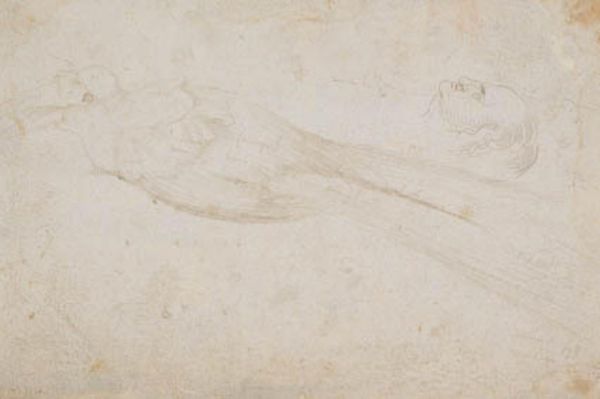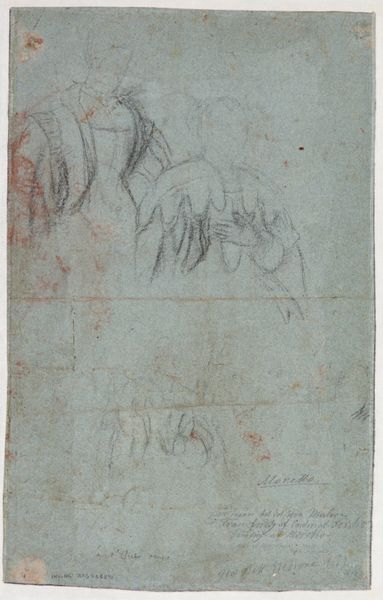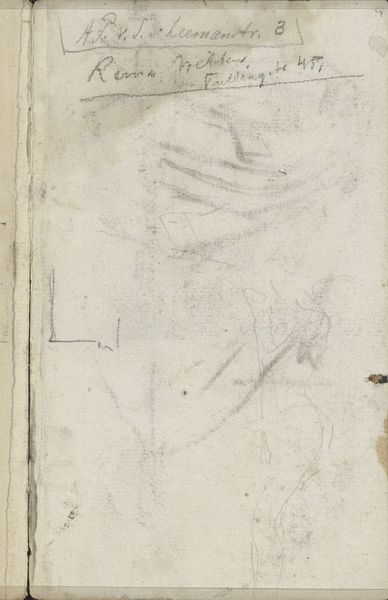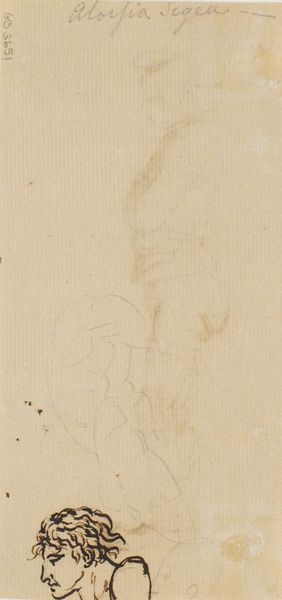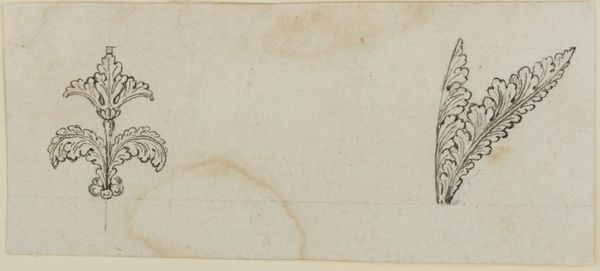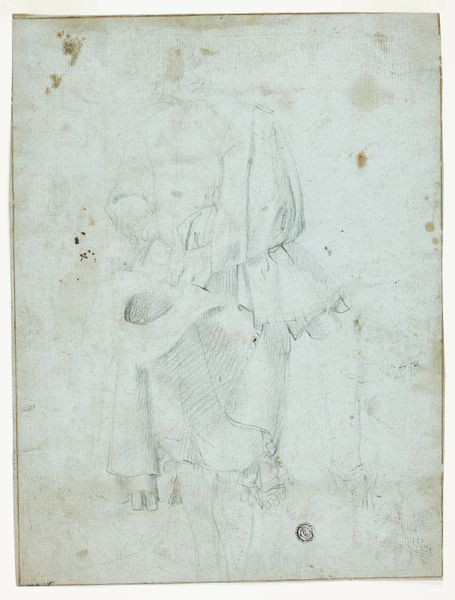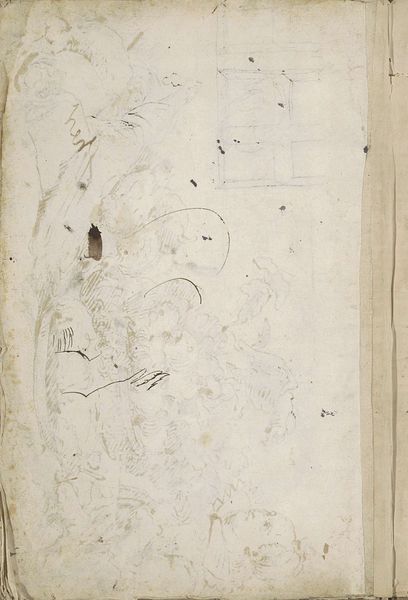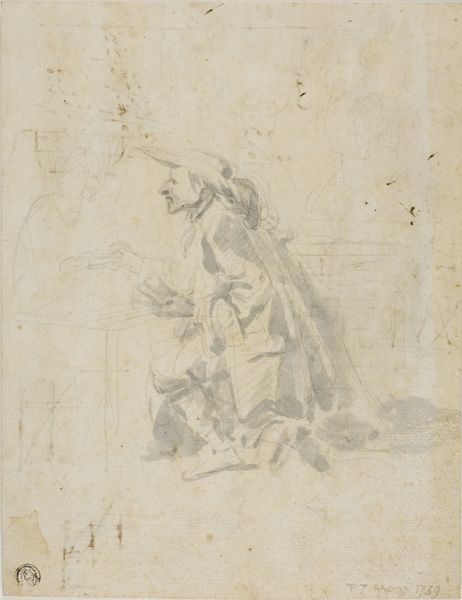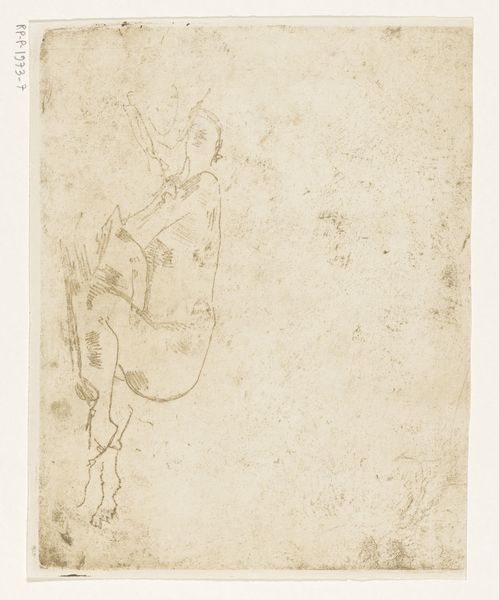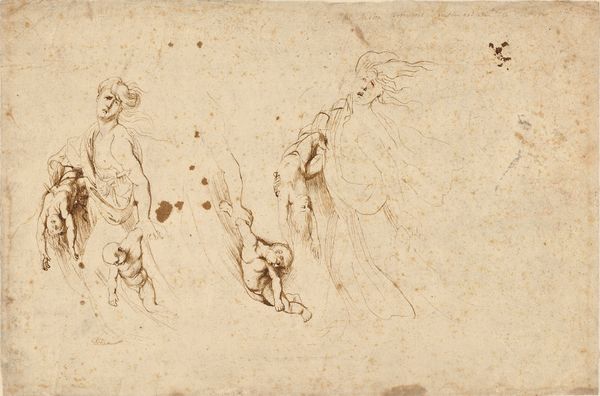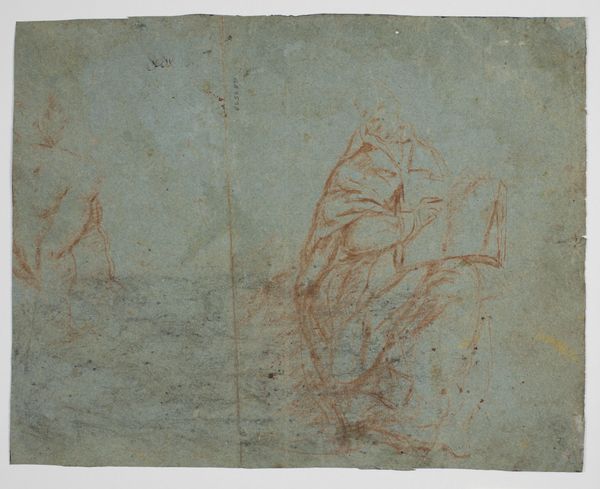
drawing, paper, ink
#
drawing
#
landscape
#
figuration
#
paper
#
ink
#
romanticism
#
watercolor
Dimensions: 200 mm (height) x 292 mm (width) (bladmaal)
Curator: Let's consider "Svagt rids af en fugl" - or "Faint Sketch of a Bird" by Nicolai Abildgaard from the 1790s, housed at the SMK. It's an ink drawing on paper. What are your first impressions? Editor: Hauntingly minimal, wouldn't you say? It's a mere whisper on the page, ethereal, dreamlike even. What’s most noticeable is the lack of visual weight; everything is so tentative and open to interpretation. Curator: Tentative is a good word. Abildgaard's process seems very open, almost exploratory. We see the texture of the paper, the way the ink bleeds slightly... It tells a story of labor; of the artist's hand at work. He isn’t presenting us with a polished product but an ongoing construction. How does that strike you from your perspective? Editor: That resonates, certainly. What appears faint reveals a complex network of influences—classical themes, Romantic sensibilities and nascent nationalism brewing across Europe at the time. This bird, even faintly sketched, speaks volumes about longing, freedom, perhaps even the fragility of those concepts in a society on the brink of revolution. The figure reaching up could symbolize the desire for upward mobility of the underclasses, while the ruined arch speaks to decaying power structures... Curator: You raise such important contexts for situating it in relation to what’s happening with laborers in his immediate reality, but from a material perspective, look at the economy of line. It's all achieved with such sparse use of ink, and likely quickly done. His artistic labor here also represents an intellectual one, a play of reference. What did paper and ink mean to an artist of his time, who had access to materials that were precious, commodified things. Editor: Absolutely. And that tension is what I find so gripping. We’re dealing with both the historical specificity of these materials—paper, ink—as well as a broader, timeless exploration of humanity’s relationship with nature and with itself, captured in the rise of a human figure and this evocative natural, even romanticized, imagery of the era. It is this tension which keeps a piece like this deeply, perpetually resonant. Curator: Exactly. The apparent simplicity is deceptive. Thank you, that’s given me so much to consider in terms of the modes of artistic labor. Editor: And thank you; reflecting on materiality helped ground this ethereal drawing in tangible struggles.
Comments
No comments
Be the first to comment and join the conversation on the ultimate creative platform.
